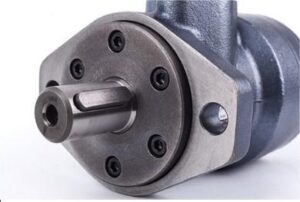A deck crane is a type of crane that is commonly used on ships. Deck cranes are used to lift and move cargo, as well as to place and remove containers from the ship.
What is a deck crane?
A deck crane is a crane used to load and unload ships. They are also sometimes called dock cranes, port cranes or quay cranes. Deck cranes are used in both shipyards and seaports for a variety of tasks, including loading and unloading cargo, transferring materials between ship and shore, and moving materials around the docks. There are several different types of deck cranes, each with its own advantages and disadvantages.
The history of deck cranes
The first recorded use of a crane on a ship dates back to the 5th century BC in Greece. The Athenian general Themistocles used a primitive version of a crane to load provisions onto ships for his fleet’s voyage to the Persian Gulf. This early use of a crane is an apt metaphor for the versatile nature of deck cranes, which have been used for everything from loading and unloading cargo to rescuing sailors from stranded vessels.
Deck cranes became increasingly commonplace in the early 20th century as steamships replaced sailboats and global trade increased. Cranes were initially used primarily for loading and unloading heavy cargo, such as coal, but their use soon expanded to include lighter loads, like containers.
Today, deck cranes are an essential piece of equipment on all sorts of vessels, from small fishing boats to massive container ships. They are used for everything from lifting heavy loads and placing them precisely where they need to go, to moving delicate cargo gently and carefully. In addition to their traditional uses, deck cranes are also now commonly used for tasks like salvaging stranded vessels and rescuing people from emergency situations at sea.
How do deck cranes work?
Deck cranes are an essential piece of equipment on board ship, used for lifting and moving cargo around the deck. There are many different designs of crane, but they all work in essentially the same way. The crane has a boom or jib, which is hinged at the base so that it can rotate. The other end of the boom is attached to a winch, which is used to raise and lower the load. The winch is operated by a hydraulic system, which is controlled by the crane operator using a joystick.
The benefits of using a deck crane
There are many benefits of using a deck crane, including the fact that they can be used to move heavy loads around a construction site with ease. They are also very versatile and can be used for a variety of different tasks, such as lifting and transporting materials, moving workers and equipment around the site, and even setting up temporary 2016 structures.
The different types of deck crane
A deck crane is a type of crane found on the decks of ships. They are used for a variety of tasks, including loading and unloading cargo, berth-to-ship transfer, and transferring provisions and personnel to and from tenders. Deck cranes come in a variety of sizes and configurations to suit the needs of different types of vessels. The most common type of deck crane is the pedestal crane, which consists of a boom, jib, and counterweight mounted on a pedestal. Other types of deck crane include the gantry crane, jib crane, semi-gantry crane, and knuckle-boom crane.
The applications of deck cranes
The applications of deck cranes are vast and varied. They can be used in a wide range of industries, including construction, maritime, transportation, and mining. Deck cranes can be used for a variety of tasks, such as lifting and moving heavy loads, loading and unloading vessels, and transporting materials from one location to another.
The future of deck cranes
Today, the world’s busiest ports are struggling to keep up with the demand for shipping. Cranes are a vital part of the loading and unloading process, and their efficiency is essential to keeping the port running smoothly.
The traditional crane design has been in use for centuries, but it is becoming increasingly clear that it is no longer adequate for today’s needs. The time has come for a new generation of deck cranes, and there are a few companies at the forefront of this change.
One such company is Konecranes, a Finnish company that is one of the world’s leading manufacturers of cranes. Konecranes has been working on a new design for deck cranes that they believe will revolutionize the way ports operate.
The new design is called the Smart crane, and it is based on a concept that Konecranes calls “connected intelligence.” The idea is to create a system where all of the components of the crane are connected to each other and to a central computer. This would allow for real-time monitoring and adjustment of the crane’s performance.
The Smart crane is still in development, but Konecranes has already unveiled a prototype at their headquarters in Finland. If successful, the Smart crane could be coming to a port near you in the not-too-distant future.
FAQs about deck cranes
What exactly is a deck crane?
A deck crane is a type of crane that is mounted on a vessel’s deck, as opposed to being fixed to land or mounted on another type of structure. Deck cranes are used for various purposes, including loading and unloading cargo, moving materials around the vessel, and even rescuing people from the water.
How big do deck cranes have to be?
The size of a deck crane depends on the size of the vessel it is mounted on. Deck cranes can range in lifting capacity from a few tons to several hundred tons. The largestdeck cranes can be found on some of the world’s largest container ships and oil tankers.
Why are deck cranes important?
Deck cranes play an important role in the safe and efficient operation of many vessels. They allow crews to more easily and safely move cargo and materials around, making it possible to load and unload ships more quickly and efficiently. In some cases, they can also be used for rescue operations.






